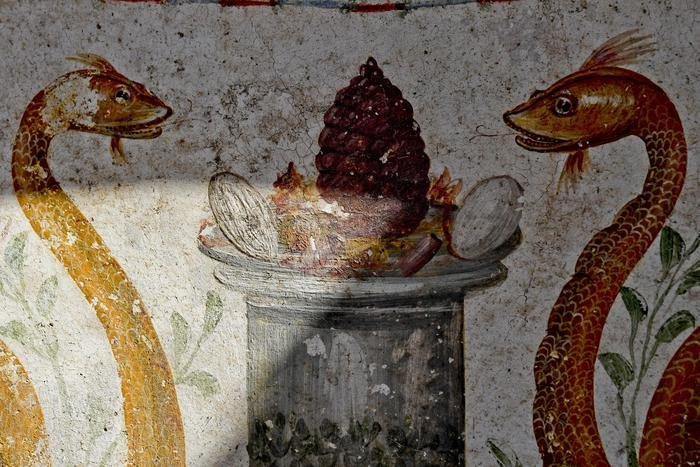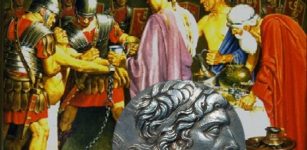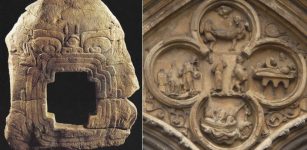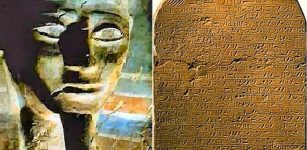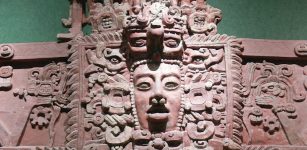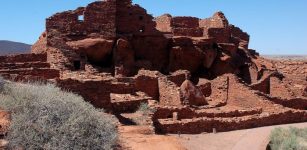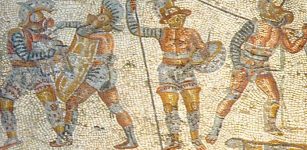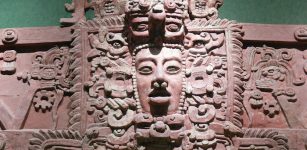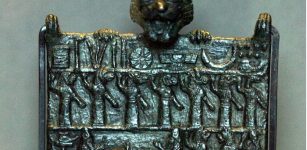A Well-Preserved Lararium Shrine Discovered At Pompeii
AncientPages.com - Il Globo reports that archaeologists have made a surprising discovery in the ruins of Pompeii, the ancient Roman city, which was destroyed following the explosion of Mt Vesuvius in AD 79.
The new discovery is a richly painted garden fresco in the lararium, or shrine area, of a home which was buried in volcanic ash and pumice centuries ago.
During ancient Roman times, lararia were altar spaces at the entrances of homes of rich families, where offerings and prayers were made to the Roman gods.
Marble or bronze statues of gods would have been placed in the area, and archaeologists found burn marks on the stone altar, evidence of the offerings that the household would have made to honour their gods.
“This lararium is one of the most elegant to have emerged at Pompeii,” archeologists said.
The well-preserved room has blood-red walls which are adorned with snakes, golden beasts fighting against a black wild boar, skies decorated with delicate birds, trees and the portrait of a figure which is part-man and part-dog.
“It is a marvelous and enigmatic space,” Massimo Osanna, the director of the archeological site told ANSA. He also said that this beautiful place will be studied in great detail.
The remains of the villa were discovered during the latest phase of excavations at the ancient site.
As part of the Great Pompeii Project, areas which have never before been exscavated, or which were partially dug in the 19th century, are being explored.
The lararium - a shrine dedicated to guardians of homes in ancient Rome, known as Lares. Their origin is uncertain; they may have been hero-ancestors, guardians of the hearth, fields, boundaries, or fruitfulness.
Lares were believed to observe, protect and the statues of domestic Lares were placed at the table during family meals; their presence, cult and blessing seem to have been required at all important family events.
Roman writers sometimes identify or conflate them with ancestor-deities, domestic Penates and the hearth. Because of these associations, Lares are sometimes categorized as household gods but some had much broader domains.
It was believed they were also protectors of roadways, seaways, agriculture, cattle, towns, cities, the state and its military were all under the protection of their particular Lar or Lares. Those who protected local neighborhoods (vici) were housed in the crossroad shrines (Compitales) which served as a focus for the religious, social and political life of their local, overwhelmingly plebeian communities.
AncientPages.com

